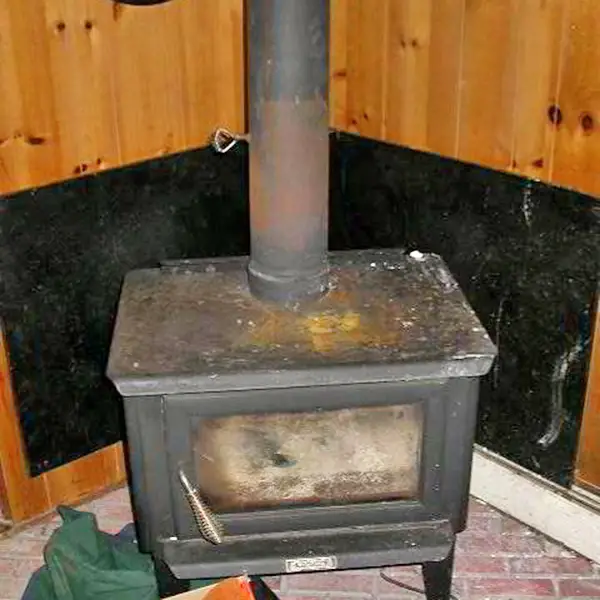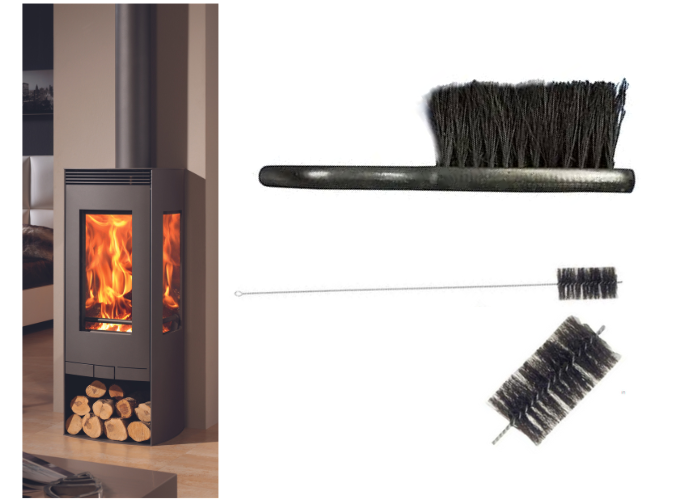Wood stoves typically last 10 to 20 years depending on usage and maintenance. Factors such as usage and maintenance impact a wood stove’s lifespan.
It is important to regularly inspect and maintain your wood stove to ensure it lasts longer. A wood stove is a valuable heating appliance that provides warmth and comfort in homes. With proper care and attention, a wood stove can last for many years, offering efficient and cost-effective heating.
Understanding the factors that influence a wood stove’s lifespan, as well as knowing when it may be time for a replacement, can help homeowners make informed decisions about their heating needs. Regular maintenance, proper installation, and monitoring signs of wear and tear are crucial in prolonging the lifespan of a wood stove. By taking these steps, homeowners can enjoy the benefits of their wood stove for years to come.


Credit: forgenflame.com
Understanding Wood Stove Lifespan
A wood stove is a reliable source of warmth and ambiance in many homes, but like any appliance, it has a limited lifespan. Understanding the factors that affect the longevity of a wood stove and being able to recognize signs of deterioration are crucial for maintaining its efficiency and safety.
Factors That Affect Longevity
- Quality of Materials: The construction materials used in a wood stove can greatly impact its lifespan.
- Proper Installation: Incorrect installation can lead to premature wear and tear on a wood stove.
- Frequency of Use: The more frequently a wood stove is used, the quicker it may deteriorate.
- Maintenance: Regular cleaning and maintenance can extend the lifespan of a wood stove.
Signs Of Deterioration
- Excessive Smoke: If your wood stove is producing more smoke than usual, it may indicate a problem.
- Creosote Build-up: Excessive creosote inside the stove can reduce its efficiency and pose a fire hazard.
- Warping or Cracking: Physical damage to the stove can compromise its structural integrity.
- Poor Performance: If your wood stove is no longer heating as efficiently as before, it may be time for a replacement.

Credit: panadero.com
Maximizing The Lifespan
When it comes to maximizing the lifespan of your wood stove, proper maintenance practices and upgrading to modern technology play crucial roles. These steps can significantly extend the longevity of your wood stove, ensuring optimal performance and efficiency for years to come.
Proper Maintenance Practices
- Regularly clean the stove and chimney to prevent creosote buildup.
- Inspect and replace gaskets to maintain proper seals and efficiency.
- Check for cracks or warping in the stove that may affect performance.
- Ensure proper airflow by cleaning vents and air intakes.
Upgrading To Modern Technology
Consider upgrading to a modern, more efficient wood stove to enhance performance and reduce operating costs. Modern stoves offer advanced features such as clean-burn technology, improved insulation, and higher efficiency ratings. By investing in a new wood stove, you can enjoy better heating results and extended durability.
When To Replace Your Wood Stove
A wood stove is a reliable and efficient way to heat your home, but like any appliance, it won’t last forever. Over time, wear and tear can cause a wood stove to deteriorate, leading to decreased performance and potential safety hazards. Knowing when to replace your wood stove is crucial to maintaining a comfortable and safe living environment.
Identifying Warning Signs
Recognizing the warning signs of a deteriorating wood stove is essential for preventing potential safety hazards. Some common warning signs to look out for include:
- Warping and/or cracking of the stove body
- Excessive smoke during operation
- Build-up of creosote in the chimney or stove
Evaluating Performance
Assessing the performance of your wood stove can help determine whether it’s time for a replacement. Signs of poor performance include:
- Increased consumption of wood fuel
- Difficulty in creating and maintaining a clean, efficient fire
- Reduced heat output and less effective heating of the living space
Comparing Different Stove Types
When it comes to wood stoves, there are various types to choose from, each with its own unique features and benefits. Two popular options are cast iron stoves and steel stoves. Let’s take a closer look at these stove types and compare their longevity expectations.
Cast Iron Vs. Steel Stoves
Cast iron stoves have been a staple in households for centuries due to their durability and timeless appeal. These stoves are known for their excellent heat retention and distribution, making them highly efficient and reliable. The longevity of cast iron stoves can be attributed to their solid construction, which allows them to withstand high temperatures and resist warping or cracking over time.
On the other hand, steel stoves have gained popularity in recent years due to their sleek design and lighter weight. Steel stoves are often more affordable than cast iron stoves, making them an attractive option for budget-conscious homeowners. While they may not have the same heat retention as cast iron stoves, steel stoves are still highly efficient in heating your space and can provide many years of reliable use.
Longevity Expectations
When it comes to the longevity of wood stoves, both cast iron and steel stoves can last for decades with proper care and maintenance. Cast iron stoves have a reputation for being incredibly long-lasting, with some models lasting over 40 years when well-maintained.
On the other hand, steel stoves typically have a shorter lifespan compared to cast iron stoves. However, this does not mean that steel stoves are inferior in terms of durability. With regular maintenance and proper usage, steel stoves can still provide reliable performance for 15 to 20 years.
Ultimately, the lifespan of your wood stove will depend on several factors, including the quality of the stove, maintenance practices, and frequency of use. By following the manufacturer’s guidelines for maintenance and using high-quality fuel, you can extend the lifespan of your wood stove and enjoy its warmth and efficiency for many years to come.
Regulatory Tips And Resources
Wood stoves typically last 10-20 years, but factors like usage and maintenance play a role. Signs of wear include warping, excessive smoke, and increased fuel usage. Regular maintenance and professional inspections can help gauge when it’s time for a replacement.
Epa Guidelines
Wood stoves are subject to regulations set forth by the Environmental Protection Agency (EPA) to ensure their safety and efficiency. These guidelines dictate the maximum amount of emissions and particulate matter a wood stove can produce. By adhering to these rules, manufacturers can provide consumers with wood stoves that have a longer lifespan and lower environmental impact.
Resources For Longevity Insights
To determine how long a wood stove will last, it’s important to consider various factors. Fortunately, there are several resources available to provide insights into wood stove longevity. Here are a few reliable sources to consult:
- Word of Mouth: Seek recommendations from friends, family, and neighbors who have owned wood stoves for many years. They can provide valuable firsthand accounts of their stove’s durability and lifespan.
- Manufacturer Information: Visit the websites of reputable wood stove manufacturers. They often provide information about the expected lifespan of their products, along with maintenance tips and other resources.
- Online Forums and Communities: Participate in online discussions and forums where wood stove owners share their experiences. These platforms can provide valuable insights into the longevity of different stove models and brands.
- Consumer Reports: Consult consumer reports and product reviews to gather information about the durability and longevity of wood stoves from unbiased sources.
Remember that the lifespan of a wood stove can vary depending on various factors, including the quality of materials, design, proper installation, and regular maintenance. It’s essential to follow proper usage and maintenance guidelines to maximize the lifespan of your wood stove and ensure its efficient performance for years to come.

Credit: www.amazon.com
Frequently Asked Questions For How Long Do Wood Stoves Last
How Do I Know If My Wood Stove Is Bad?
If your wood stove produces excess smoke, dust, or ash, it may need replacing. A healthy stove burns efficiently without these issues. Watch for warping, smoke, creosote buildup, increased fuel use, or poor performance. Regular maintenance and inspections are key for longevity.
How Do You Know When Your Wood Stove Needs To Be Replaced?
Know when to replace your wood stove if it emits excess smoke, creosote buildup, warping, or poor performance. Regular maintenance and inspections are crucial.
What Is The Life Expectancy Of A Cast Iron Wood Stove?
The life expectancy of a cast iron wood stove is typically around 20 to 25 years. Regular maintenance can extend its lifespan.
Do Wood Burning Stoves Wear Out?
Wood burning stoves can wear out over time due to age and general wear and tear. This can result in decreased efficiency, leaks, and warping. Upgrading to a more efficient and modern wood burning stove can reduce costs and improve performance.
Regular maintenance and annual cleaning and inspection can help prolong the lifespan of a wood burning stove.
How Do I Know If My Wood Stove Needs To Be Replaced?
If your wood burning stove is producing excessive smoke, dust, or ash, it may be time for a replacement. A healthy stove should burn cleanly and efficiently.
Conclusion
The life expectancy of a wood stove depends on various factors such as maintenance, quality, and usage. Regular maintenance and proper care can prolong the lifespan of a wood stove. Keep an eye out for warning signs like warping, excessive smoke, and decreased efficiency, and consider upgrading to a more efficient model when necessary.
Regular maintenance and timely replacements can ensure the lasting performance of your wood stove for years to come.
